Month: March 2017

Appreciate & Respect Your Father while He’s Still Here
Last night, my husband and I were on a date… to the grocery store. (We’re quite glamorous that way!) I was walking down an aisle when I noticed a man standing in the middle of it with his cart. His daughter, who must have been in her 20s was with him, helping him choose some brownies from the shelf. I heard her say, in an angry tone, “So you like these ones!” She then noticed me, as I was waiting to go around her father, and proceeded to yell, “Dad, you’re in the way!” I told him that it was no trouble, and mumbled under my breath as I passed the girl, “Don’t talk to him that way.” As they were leaving the aisle, I saw the gentleman looking as though he were a schoolboy who had been scolded by the teacher. As I heard her bellow, “Anything else?”, tears filled my eyes.
I managed to hold it together for the remainder of our shopping, but the second we got into our vehicle, the tears started to flow. My husband looked at me, confused. I told him what I witnessed. I am a pretty non-confrontational person, but never in my life had I wanted to say something so badly; I wish she had heard my mumbled disapproval. I started to think of what I would have said if she had responded.
I knew exactly what it would have been:
“Miss, you don’t know how good you have it. You don’t know what you’re doing. You see, I lost my Dad three years ago to an awful disease and I would give anything to have the chance to grocery shop with him. Sure, I know that things can get frustrating at times, but this man that you’re here with, he matters. You might feel like you’d rather be anywhere else, but from my perspective, there’s nowhere else I’d rather be right now. You’re wasting a precious opportunity to make memories with your father, and you can’t get these moments back.”
“Look at your Dad’s face. Can’t you see that you’re hurting him? Be patient with him. He probably looked at this outing as some great bonding time between a father and daughter, but instead, he is left with complete and utter disappointment.”
“I’ll pray for him tonight; I’ll pray that he finds comfort. And I’ll pray for you. My prayer for you, young woman who thinks you are too grown up for your Dad, is that you never have to know the kind of heartbreak and heartache that I do. I’ll pray that God helps you to remember how good you do have it, and to appreciate it every day.”
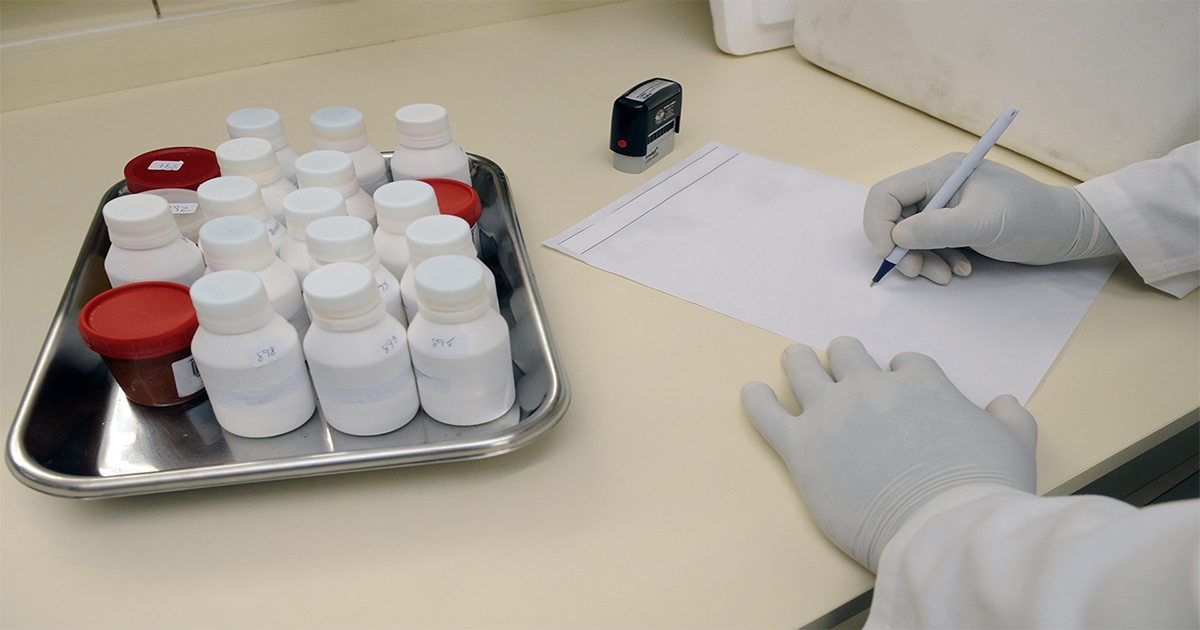
Why Is Mesothelioma Increasing?
There has been a significant increase in death rates from mesothelioma in the past decade. The increase in mesothelioma cases has been attributed to the lack of a complete ban on asbestos in the U.S., significant natural disasters that destroyed buildings containing asbestos materials, and the Sept. 11 terror attacks that exposed rescue workers to the cancer-causing material, among other factors.
How Many Cases of Mesothelioma Are Diagnosed Each Year?
 Because the life expectancy for mesothelioma patients is generally one to two years, the number of cases diagnosed each year can be measured relative to the death rate. From 2005 to 2015, researchers saw a 7.8 percent increase in death rates from mesothelioma, according to the latest Global Burden of Disease Study (GBD 2015) published Oct. 8, 2016, in The Lancet. The study notes that the number of deaths worldwide from mesothelioma in 2015 was 33,400.
Because the life expectancy for mesothelioma patients is generally one to two years, the number of cases diagnosed each year can be measured relative to the death rate. From 2005 to 2015, researchers saw a 7.8 percent increase in death rates from mesothelioma, according to the latest Global Burden of Disease Study (GBD 2015) published Oct. 8, 2016, in The Lancet. The study notes that the number of deaths worldwide from mesothelioma in 2015 was 33,400.

In another study focusing on the U.S. alone, an estimated 15,000 Americans die every year from asbestos-related diseases, with mesothelioma accounting for nearly 3,000 deaths per year. The Environmental Working Group (EWG) indicates that during the period from 1999 to 2013, an estimated 127,579 to 159,480 Americans died from asbestos exposure.
What Is Causing the Rise in Mesothelioma in the U.S.?
There are several factors that may be contributing to the increase in mesothelioma cases in the United States:
 Asbestos use has not been banned completely in the U.S., and asbestos-containing materials remain in place in older homes, businesses, and schools. “Approximately 1.3 million workers in construction and general industry potentially are being exposed to asbestos during maintenance activities or remediation of buildings containing asbestos,” according to a report from the Centers for Disease Control and Prevention and the National Institute for Occupational Safety and Health. Construction photo
Asbestos use has not been banned completely in the U.S., and asbestos-containing materials remain in place in older homes, businesses, and schools. “Approximately 1.3 million workers in construction and general industry potentially are being exposed to asbestos during maintenance activities or remediation of buildings containing asbestos,” according to a report from the Centers for Disease Control and Prevention and the National Institute for Occupational Safety and Health. Construction photo Devastating storms, including Hurricane Katrina in 2005 and Hurricane Sandy in 2012, led to the destruction of buildings with asbestos-containing materials, increasing the risk of asbestos exposure. Future storms will have the same effect. Hurricane damage photo
Devastating storms, including Hurricane Katrina in 2005 and Hurricane Sandy in 2012, led to the destruction of buildings with asbestos-containing materials, increasing the risk of asbestos exposure. Future storms will have the same effect. Hurricane damage photo The 9/11 terrorist attacks exposed an estimated 41,000 people to asbestos and other toxins during the rescue and clean-up efforts after the Twin Towers collapsed, according to the CDC. 9/11 rescue worker photo
The 9/11 terrorist attacks exposed an estimated 41,000 people to asbestos and other toxins during the rescue and clean-up efforts after the Twin Towers collapsed, according to the CDC. 9/11 rescue worker photo Mineral mines in some states such as Montana and Minnesota may have contributed to higher than expected rates of mesothelioma. Miner photo
Mineral mines in some states such as Montana and Minnesota may have contributed to higher than expected rates of mesothelioma. Miner photo
Mesothelioma can develop 15 to 60 years after asbestos exposure occurs. That means any time there is an issue, such as a hurricane, for example, the potential for the rising number of mesothelioma cases extends for many more decades. Preventing asbestos exposure is the only sure way to halt increased rates of mesothelioma.
Which States Have the Most Mesothelioma Cases?
The number of mesothelioma cases is higher in the most populous states. California, Florida, Pennsylvania, New York, and Texas had the most asbestos-related deaths over the 14-year period covered in the EWG study. However, Delaware, Maine, Montana, Pennsylvania, Washington, and West Virginia had death rates that were 50 percent to 100 percent higher than the national average of 4.9 per 100,000 people.
I think we should separate into two charts here for comparison:
| State | NUMBER OF MESOTHELIOMA DEATHS (1999-2013) |
| California | 3,997 |
| Florida | 2,619 |
| Pennsylvania | 2,601 |
| New York | 2,253 |
| Texas | 2,064 |
| State | ASBESTOS-RELATED DEATH RATES (1999-2013)* |
| Maine | 10.1 |
| West Virginia | 9 |
| Montana | 7.9 |
| Delaware | 7.6 |
| Pennsylvania | 7.5 |
| Washington | 7.5 |
*Deaths per 100,000 people
What Does the Future Hold for Mesothelioma Cases in the U.S.?
“Ensuring a future decrease in mesothelioma mortality requires meticulous control of exposures to asbestos and other materials that might cause mesothelioma.”
Centers for Disease Control and Prevention, “Malignant Mesothelioma Mortality – United States, 1999-2005“

Nurse Wishes Mary Hesdorffer Well As She Retires
The ability to command the respect and admiration of people from all walks of life is not something that is easily accomplished. For the mesothelioma community, Nurse Practitioner, Mary Hesdorffer R.N., of the Mesothelioma Applied Research Foundation, is one person who has been central to the mission of raising awareness for this rare cancer, published research, comforted thousands of patients and family members, and earned the respect of mesothelioma research scientists and clinicians.
As the Executive Director of the Mesothelioma Applied Research Foundation, Mary has dedicated herself to raising funds, and is a huge advocate, for the mesothelioma community to fund research. It would be impossible to list all of the accomplishments that Mary has achieved over the years. What sums it up is a tribute from a patient’s family member on the Meso Foundation’s web site, “Mary took the confusion out of the diagnosis.”
The Mesothelioma Applied Research Foundation has an annual conference that includes scientists, researchers, patients and families. The foundation, the only non- profit for mesothelioma is dedicated to research to finding a cure for mesothelioma. This year the conference will be held March 27 – 29 at the National Institutes of Health in Bethesda, Maryland.
In addition to hearing the latest updates on mesothelioma research, the conference will be a time to wish Mary Hesdorffer well. Mary has been with the Meso Foundation since the beginning. In her various roles over the years, she has been the one that the mesothelioma patients and families know. With countless hours, phone calls, and time dedicated to the mesothelioma community, Mary has been the go-to person for information, support and advocacy. Whether speaking at conferences, conducting support groups or reaching out to patients, Mary has been a constant, familiar face for mesothelioma families and the medical community. Everyone in the mesothelioma community knows Mary.
We wish Mary well in the next phase of her life. She will never be replaced or forgotten for all she has done, and will most certainly continue to do, for the mesothelioma community. Well done!

Anti-Cancer Treatment May Bring Mesothelioma Closer to Becoming a Manageable Chronic Condition
Although mesothelioma is an incurable cancer, more and more patients are living long, productive lives after diagnosis. For them, the disease has become a chronic condition they can manage rather than a cancer that consumes them. Now, one anti-cancer drug is keeping some cancer patients alive and well for many years beyond their initial prognosis.
According to a March 9 NBC News story, Gleevec (imatinib), a daily drug for chronic myelogenous leukemia (CML), has been successful in keeping patients with the cancer alive for more than 10 years.
http://www.nbcnews.com/health/cancer/cancer-pill-gleevec-keeps-patients-alive-well-decade-n730951
In a study funded by Novartis, the maker of the drug, researchers found that 83 percent of patients lived 10 years or longer, with minimal side-effects from the drug.
Before Gleevec, CML patients had to endure highly toxic chemotherapy treatments or submit to a bone marrow transplant. Without either of those options, the patient’s prognosis was grim, said Dr. Richard Silver, a hematologist and oncologist at New York Presbyterian-Weill Cornell Medical Center who helped first test the drug in patients.
The Gleevec study results were so good that the trial was halted and all patients were given the drug, the U.S. FDA approved the drug, and, according to the Leukemia & Lymphoma Society, somewhere from 36,000 to 100,000 Americans are now CML survivors. Ultimately, some patients are able to stop taking the drug, however, they are monitored closely and can go back on the drug if needed.
“To have lived through the opportunity where we can go to a patient and say, ‘We have got this new drug and it looks great’ and it is great,” Silver said. “You can imagine what a thrill it is to see these people and see them live their lives productively, with their jobs and their families and children and grandchildren.”
A chronic disease is one lasting three months or more, by the definition of the U.S. National Center for Health Statistics. About one- fourth of people with chronic conditions have one or more daily activity limitations. Chronic diseases generally cannot be prevented by vaccines or cured by medication, and they also do not disappear. However, the disease is often considered manageable and patients can live their lives.
In separate studies, research points to the possible use of imatinib in the support of lung cancer and mesothelioma patients. In a 2016 study, researchers from the Cancer Research UK, Manchester Institute found the Abelson (ABL) family of nonreceptor tyrosine kinases, ABL1 and ABL2, are “mutated or amplified” in nearly 10% of lung cancer cases and are key to tumor growth. The researchers turned to imatinib, an ABL inhibitor, and found in the lab that it effectively blocked tumor growth. A 2008 study by researchers in Italy found that imatinib “enhances the therapeutic response to gemcitabine” in combination treatment for malignant mesothelioma.
Pleural mesothelioma, an asbestos-caused cancer of the lining of the lungs, is often treated with similar protocols as lung cancer. Both cancers have shown to be aggressive and often reject and defeat many of the common treatments. However, care that has been shown to be successful in helping patients with other challenging cancers continue living a productive life brings hope to the mesothelioma community. The community will be keeping an eye on further Gleevec studies in the hopes the research could translate to mesothelioma care.
“It [CML] was really a death warrant. This has been the thrill of my life,” Dr. Silver told NBC News.
Read the full study on Gleevac in the March 9 issue of the New England Journal of Medicine.
http://www.nejm.org/doi/10.1056/NEJMoa1515725
Photo Credit: NBC News
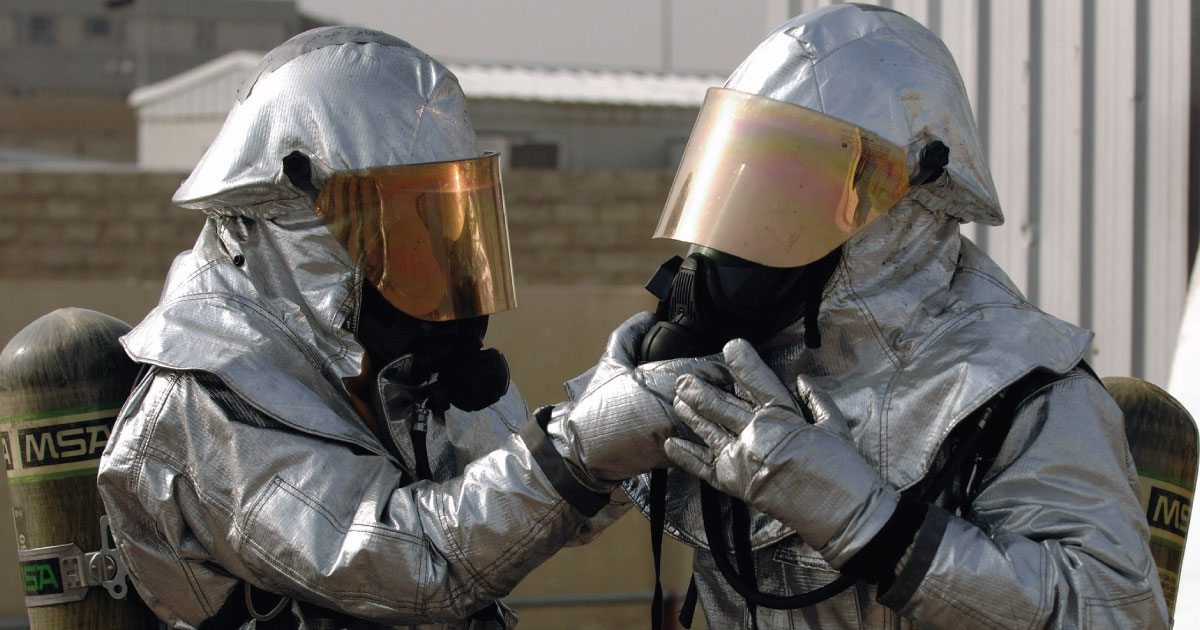
Help End Asbestos Exposure & the Risk of Mesothelioma
On September 11, 2001, we were all changed forever by the terrorist acts against our country. The first responders involved in the rescue and cleanup of the debris at the World Trade Center in New York, as well as the first responders and victims at both the Pentagon and Shanksville, Pennsylvania sites, continue to be affected by the attacks with various health issues. In response to the attacks that day, the World Trade Center Health Program has been established to follow the health of the responders and survivors of that day from all three sites.
It is estimated that 400 tons of asbestos, used in the construction of the Twin Towers was released into the Manhattan area in the form of a dust cloud. Now, fifteen and a half years later, asbestos continues to be imported into this country with an estimated 100 tons imported in 2016. The latency period for mesothelioma, a cancer caused by asbestos exposure, can take from 15 to 60 years. According to the U.S. Environmental Protection Agency, no amount of asbestos exposure is considered safe.
The World Trade Center Health Program has treated over 65,000 rescue and recovery people.
The cancer rate has increased among firefighters who were at ground zero by 20% compared to other firefighters who were not at the site. A recent study done by the National Institutes of Occupational Safety found that firefighters have a rate of mesothelioma two times greater than the average. Firefighters have a dangerous job every day. Worrying about getting a dreaded cancer should not be added to their already heavy burden.
The Asbestos Disease Awareness Organization (ADAO) is holding its 13th annual International Asbestos Awareness and Prevention Conference April 7-9, 2017 in Washington D.C. ADAO’s purpose is to raise awareness, educate, and activate the community about the dangers of asbestos. For more information visit: www.asbestosdiseaseawareness.org.
The survivors, the rescuers and recovery workers continue to deal with the aftermath of 9/11 with ongoing health issues. Everyone who is grateful for the support of our first responders should be proactive and get involved in helping eliminate the asbestos risks that affect Americans. Help ban asbestos in the U.S.
Free Mesothelioma Patient & Treatment Guide
We’d like to offer you our in-depth guide, “A Patient’s Guide to Mesothelioma,” absolutely free of charge.
It contains a wealth of information and resources to help you better understand the condition, choose (and afford) appropriate treatment, and exercise your legal right to compensation.
Download Now Asbestos use has not been banned completely in the U.S., and asbestos-containing materials remain in place in older homes, businesses, and schools. “Approximately 1.3 million workers in construction and general industry potentially are being
Asbestos use has not been banned completely in the U.S., and asbestos-containing materials remain in place in older homes, businesses, and schools. “Approximately 1.3 million workers in construction and general industry potentially are being 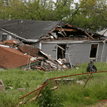 Devastating storms, including Hurricane Katrina in 2005 and Hurricane Sandy in 2012, led to the destruction of buildings with asbestos-containing materials, increasing the risk of asbestos exposure. Future storms will have the same effect. Hurricane damage photo
Devastating storms, including Hurricane Katrina in 2005 and Hurricane Sandy in 2012, led to the destruction of buildings with asbestos-containing materials, increasing the risk of asbestos exposure. Future storms will have the same effect. Hurricane damage photo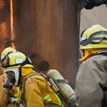 The 9/11 terrorist attacks exposed an estimated 41,000 people to asbestos and other toxins during the rescue and clean-up efforts after the Twin Towers collapsed, according to the CDC. 9/11 rescue worker photo
The 9/11 terrorist attacks exposed an estimated 41,000 people to asbestos and other toxins during the rescue and clean-up efforts after the Twin Towers collapsed, according to the CDC. 9/11 rescue worker photo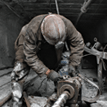 Mineral mines in some states such as Montana and Minnesota may have contributed to higher than expected rates of mesothelioma. Miner photo
Mineral mines in some states such as Montana and Minnesota may have contributed to higher than expected rates of mesothelioma. Miner photo